Solar Physics
The Sun, our nearest star, has long captured the imagination of humankind.
It has been the inspiration for religion, art and, of course,
scientific study throughout the ages. Throughout the long history of
scientific study of the Sun, our understanding has grown and now
we have great knowledge of the huge range of phenomena associated with
the different levels of solar activity. Now, as the human race continues
its exploration space, the study of the Sun has taken on new meaning.
The necessity for prediction of the fluctuations in solar activity
(known as space weather forecasting) has arisen, leading to a new importance
for solar research.
HINODE
Launched in September 2006, the Hinode satellite has provided
revolutionary images of the sun by combining high-resolution observations
with the seeing-free environment of space.
These observations have shed new light on the relation between
the observable solar phenomena and the fundamental physical processes
that create them. Opening a new era in the study of the solar atmosphere.
Observations using the Solar Optical Telescope (SOT) onboard the Hinode
satellite, the first large aperture optical telescope for solar observations
to be launched into space, have revealed a myriad of new and exciting phenomena.
SOT has been particularly effective in observing the collimated ejections
of plasma in the solar atmosphere known as jets.
Figure 1 shows a large number of small jets around a sunspot.
The jets with bright footpoints are known as anemone jets,
and are created through magnetic reconnection.
This process is the same as that which drives flares, a phenomenon
that is orders of magnitude larger in its spatial scale (Shibata et al. 2007).
Investigating the dynamics of the footpoint region has revealed reconnection
relates to the ejection of plasma.
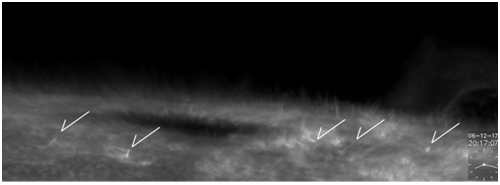 Figure 1: Ubiquitous jets around a sunspot seen in Ca II H by SOT
The high quality data sets obtained by Hinode have been of great importance
in providing observations of the temporal evolution of a wide range of
magnetohydrodynamic instabilities in an astrophysical setting.
Observations of the dark sunspot umbra show may small bright features
known as umbral dots. These dots are the signature of thermal convection
inside the highly magnetised atmosphere inside the sunspot.
Through analysis of Hinode data, Watanabe et al (2009) was able to
determine how the characteristics of the umbral dots depended on their
magnetic structure, providing strong constraints on the theory of
convection in a magnetic field.
Figure 1: Ubiquitous jets around a sunspot seen in Ca II H by SOT
The high quality data sets obtained by Hinode have been of great importance
in providing observations of the temporal evolution of a wide range of
magnetohydrodynamic instabilities in an astrophysical setting.
Observations of the dark sunspot umbra show may small bright features
known as umbral dots. These dots are the signature of thermal convection
inside the highly magnetised atmosphere inside the sunspot.
Through analysis of Hinode data, Watanabe et al (2009) was able to
determine how the characteristics of the umbral dots depended on their
magnetic structure, providing strong constraints on the theory of
convection in a magnetic field.
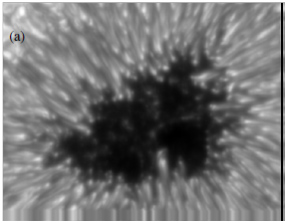 Figure 2: Blue continuum image of a sunspot taken by SOT/Hinode
on 28 Feb. 2007. The umbral dots are the bright dots in the middle
of the dark umbra.
References:
K. Shibata et al., Science, Volume 318, Issue 5856, pp. 1591- (2007).
H. Watanabe, R. Kitai & K. Ichimoto; The Astrophysical Journal, Volume 702,
Issue 2, pp. 1048-1057 (2009).
Domeless Solar Telescope (DST)
The Hinode satellite, along with other solar-observation satellites,
has changed the way that we study the Sun, but there are always limits
to what can be done with a space-based telescope. Especially,
complex instrumentation and upgrading of the telescope are nearly impossible.
Therefore, ground based observations play an important role by providing
observational coverage of the Sun in a large range of wavelengths, and
by giving good spectral coverage of those wavelengths.
At Hida observatory the Domeless Solar Telescope (DST) provides a highly
complementary data set to the Hinode satellite. Using the spectral data,
it is possible to obtain information (i.e. temperature, density and velocity)
that is not available from current space-borne instruments.
Ground based observations obviously suffer from poor seeing as a result
of turbulence in the air. However, an adaptive optics (AO) system has been
installed onto the telescope, which now allows high-quality data to be
obtained even when conditions are not perfect (Miura et al, 2012).
In addition to AO, post-fact image processing scheme employing the speckle
masking algorithm has been developed to recover a nearly diffraction limited
spatial resolution of the telescope (Ichimoto and Kawate 2014),
results are shown in Figure 3.
Figure 2: Blue continuum image of a sunspot taken by SOT/Hinode
on 28 Feb. 2007. The umbral dots are the bright dots in the middle
of the dark umbra.
References:
K. Shibata et al., Science, Volume 318, Issue 5856, pp. 1591- (2007).
H. Watanabe, R. Kitai & K. Ichimoto; The Astrophysical Journal, Volume 702,
Issue 2, pp. 1048-1057 (2009).
Domeless Solar Telescope (DST)
The Hinode satellite, along with other solar-observation satellites,
has changed the way that we study the Sun, but there are always limits
to what can be done with a space-based telescope. Especially,
complex instrumentation and upgrading of the telescope are nearly impossible.
Therefore, ground based observations play an important role by providing
observational coverage of the Sun in a large range of wavelengths, and
by giving good spectral coverage of those wavelengths.
At Hida observatory the Domeless Solar Telescope (DST) provides a highly
complementary data set to the Hinode satellite. Using the spectral data,
it is possible to obtain information (i.e. temperature, density and velocity)
that is not available from current space-borne instruments.
Ground based observations obviously suffer from poor seeing as a result
of turbulence in the air. However, an adaptive optics (AO) system has been
installed onto the telescope, which now allows high-quality data to be
obtained even when conditions are not perfect (Miura et al, 2012).
In addition to AO, post-fact image processing scheme employing the speckle
masking algorithm has been developed to recover a nearly diffraction limited
spatial resolution of the telescope (Ichimoto and Kawate 2014),
results are shown in Figure 3.
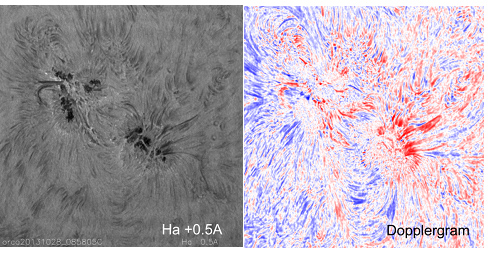 Figure 3: Reconstructed images and Dopplergram in H-alpha using
speckle masking method
Combing the Ca II K spetroheliograph on DST with observations in the
Ca II H line by SOT on Hinode, Morita et al (2010) were able to
investigate the properties of anemone jets in the solar chromosphere,
see Figure 4. They found that the jet reconnection happened low in the
solar chromosphere. They were also able to estimate a total magnetic
energy release of 1026 erg.
Figure 3: Reconstructed images and Dopplergram in H-alpha using
speckle masking method
Combing the Ca II K spetroheliograph on DST with observations in the
Ca II H line by SOT on Hinode, Morita et al (2010) were able to
investigate the properties of anemone jets in the solar chromosphere,
see Figure 4. They found that the jet reconnection happened low in the
solar chromosphere. They were also able to estimate a total magnetic
energy release of 1026 erg.
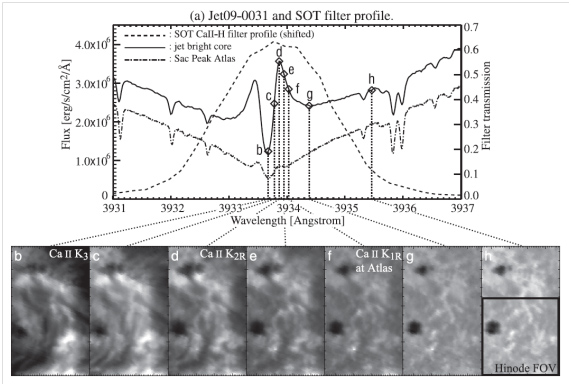 Figure 4: Spectroheliogram in several wavelengths in Ca II K line
taken by DST and Ca II H image taken by SOT/Hinode
Another important capability of the Domeless Solar Telescope is the
high precision spectro-polarimetory that can be used in wide range of
the wavelength (Anan et al 2012). It provides new tools for diagnosing
solar plasma, i.e., chromospheric magnetic field, electric field and
anisotropic distribution of particles.
References:
N. Miura et al, Adaptive Optics Systems III. Proceedings of the SPIE,
Volume 8447, article id. 84474D, 6 pp. (2012).
K. Ichimoto and T. Kawate, Image Reconstruction Program by Speckle Masking
Method, Technical Reports from Kwasan and Hida Observatories,
Graduate School of Science, Kyoto University, Vol.2-1 (2014)
S. Morita et al, Publications of the Astronomical Society of Japan, Vol.62,
No.4, pp.901--920 (2010)
T. Anan et al, Ground-based and Airborne Instrumentation for Astronomy IV.
Proceedings of the SPIE, Volume 8446, article id. 84461C, 12 pp. (2012).
Solar Magnetic Activity Research Telescope
Solar activity has a significant impact on our daily lives.
The vast majority of large disturbances caused to the Earth's magnetic field,
which can result in power blackouts as in Quebec in March 1989, are caused
by solar activity. Solar flares send X-rays and high energy particles toward
the Earth as well as huge magnetic clouds known as Coronal Mass Ejections
(CMEs), resulting in damage to satellites and great danger to astronauts.
Therefore, forecasting this space weather great importance, and to actually
perform this task it relies on a deep understanding of eruptions from the Sun.
The Solar Magnetic Activity Research Telescope (SMART) at Hida Observatory was
designed with the specific purpose of investigating solar eruptive phenomena.
Using SMART data, Asai et al (2012) investigated a Moreton wave,
the disruption to the solar Chromosphere caused by a shock in the Corona,
travelling at 800 km/s. By connecting the propagation of this wave to
oscillations of a prominence and an EUV wave observed by AIA on SDO,
it was possible for the first time to determine the connection between all
these events. The Moreton wave, observed in H alpha and the EUV wave are
shown in Figure 5.
Figure 4: Spectroheliogram in several wavelengths in Ca II K line
taken by DST and Ca II H image taken by SOT/Hinode
Another important capability of the Domeless Solar Telescope is the
high precision spectro-polarimetory that can be used in wide range of
the wavelength (Anan et al 2012). It provides new tools for diagnosing
solar plasma, i.e., chromospheric magnetic field, electric field and
anisotropic distribution of particles.
References:
N. Miura et al, Adaptive Optics Systems III. Proceedings of the SPIE,
Volume 8447, article id. 84474D, 6 pp. (2012).
K. Ichimoto and T. Kawate, Image Reconstruction Program by Speckle Masking
Method, Technical Reports from Kwasan and Hida Observatories,
Graduate School of Science, Kyoto University, Vol.2-1 (2014)
S. Morita et al, Publications of the Astronomical Society of Japan, Vol.62,
No.4, pp.901--920 (2010)
T. Anan et al, Ground-based and Airborne Instrumentation for Astronomy IV.
Proceedings of the SPIE, Volume 8446, article id. 84461C, 12 pp. (2012).
Solar Magnetic Activity Research Telescope
Solar activity has a significant impact on our daily lives.
The vast majority of large disturbances caused to the Earth's magnetic field,
which can result in power blackouts as in Quebec in March 1989, are caused
by solar activity. Solar flares send X-rays and high energy particles toward
the Earth as well as huge magnetic clouds known as Coronal Mass Ejections
(CMEs), resulting in damage to satellites and great danger to astronauts.
Therefore, forecasting this space weather great importance, and to actually
perform this task it relies on a deep understanding of eruptions from the Sun.
The Solar Magnetic Activity Research Telescope (SMART) at Hida Observatory was
designed with the specific purpose of investigating solar eruptive phenomena.
Using SMART data, Asai et al (2012) investigated a Moreton wave,
the disruption to the solar Chromosphere caused by a shock in the Corona,
travelling at 800 km/s. By connecting the propagation of this wave to
oscillations of a prominence and an EUV wave observed by AIA on SDO,
it was possible for the first time to determine the connection between all
these events. The Moreton wave, observed in H alpha and the EUV wave are
shown in Figure 5.
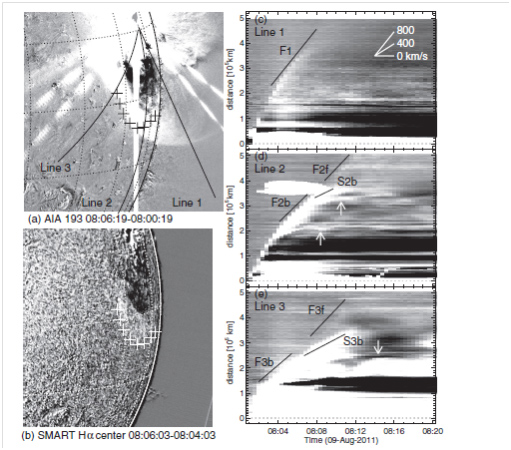 Figure 5: Simultaneous observations of an EUV wave by AIA and a
Moreton wave by SMART.
It is estimated that approximately half the energy that is released by
a flare is visible in white light. Therefore, to understand the energy
release process of a flare, understanding the temporal and spatial evolution
of the white light emission is of fundamental importance.
SMART'S T3 telescope (FISCH; Flare Imaging System in Continuum and H-alpha was
designed to investigate just this. The first-light observations using this
telescope have been performed (Ishii et al 2013)
Figure 5: Simultaneous observations of an EUV wave by AIA and a
Moreton wave by SMART.
It is estimated that approximately half the energy that is released by
a flare is visible in white light. Therefore, to understand the energy
release process of a flare, understanding the temporal and spatial evolution
of the white light emission is of fundamental importance.
SMART'S T3 telescope (FISCH; Flare Imaging System in Continuum and H-alpha was
designed to investigate just this. The first-light observations using this
telescope have been performed (Ishii et al 2013)
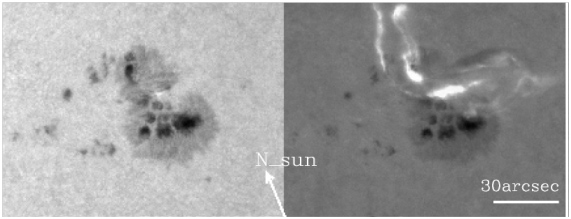 Figure 6: Continuum (left) and H-alpha (right) images of a X-class flare
on 6 Sep. 2011 taken by SMART/FISCH.
References:
A. Asai et al, The Astrophysical Journal Letters, Volume 745, Issue 2,
article id. L18, 6 pp. (2012).
T. T. Ishii et al, Publications of the Astronomical Society of Japan,
Vol.65, No.2, Article No.39, 9 pp.(2013)
Continuous H-Alpha Imaging Network (CHAIN)
To build a complete understanding of solar eruptions, and to provide
complete coverage of events, it is necessary to observe the sun throughout
the whole day. To this end, Kyoto University sent the Flare Monitoring
Telescope (FMT), formerly based at Hida Observatory, to ICA University in Peru.
The data from FMT (observations of the Sun in both the line centre and the
wings of the H-alpha line; Figure 7) allow for Doppler maps of erupting
filaments to be constructed, giving the full 3D velocity field of a solar
eruption (Morimoto & Kurokawa 2003). Moving FMT is the first step of the
Continuous H-Alpha Imaging Network (CHAIN) project (UeNo et al. 2009) that
aims to station H-alpha telescopes around the world.
Figure 6: Continuum (left) and H-alpha (right) images of a X-class flare
on 6 Sep. 2011 taken by SMART/FISCH.
References:
A. Asai et al, The Astrophysical Journal Letters, Volume 745, Issue 2,
article id. L18, 6 pp. (2012).
T. T. Ishii et al, Publications of the Astronomical Society of Japan,
Vol.65, No.2, Article No.39, 9 pp.(2013)
Continuous H-Alpha Imaging Network (CHAIN)
To build a complete understanding of solar eruptions, and to provide
complete coverage of events, it is necessary to observe the sun throughout
the whole day. To this end, Kyoto University sent the Flare Monitoring
Telescope (FMT), formerly based at Hida Observatory, to ICA University in Peru.
The data from FMT (observations of the Sun in both the line centre and the
wings of the H-alpha line; Figure 7) allow for Doppler maps of erupting
filaments to be constructed, giving the full 3D velocity field of a solar
eruption (Morimoto & Kurokawa 2003). Moving FMT is the first step of the
Continuous H-Alpha Imaging Network (CHAIN) project (UeNo et al. 2009) that
aims to station H-alpha telescopes around the world.
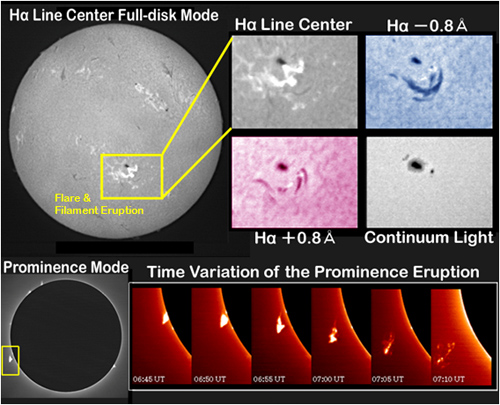 Figure 7: The data from the Flare Monitoring Telescope (FMT)
References:
T. Morimoto & H. Kurokawa; Publications of the Astronomical Society of Japan,
Vol.55, No.6, pp. 1141-1151 (2003)
S. UeNo et al.; Data Science Journal, Vol.8(2009), pp.51-58
Other Instruments
There are a number of telescopes, both space and ground-based, which are
also used by the group. Using the Atmospheric Imaging Array (AIA), a set of
telescopes that observe the solar atmosphere in a range of different
temperature lines in extreme ultraviolet, on the Solar Dynamics Observatory
(SDO) it has been possible to investigate the dynamic evolution of the
reconnection region of a solar flare (Takasao et al 2012).
The formation and ejection of blobs of plasma in the flare current sheet
have presented strong evidence of the existence of magnetic islands in
the current sheet (see Figure 8), theoretically hypothesized to be important
to achieve fast reconnection. This is the first observation of its kind and
represents a big advancement in our understanding of flare reconnection.
We believe that SMART, and T3 in particular, will provide a highly
complementary data set to that is being obtained by SDO.
Figure 7: The data from the Flare Monitoring Telescope (FMT)
References:
T. Morimoto & H. Kurokawa; Publications of the Astronomical Society of Japan,
Vol.55, No.6, pp. 1141-1151 (2003)
S. UeNo et al.; Data Science Journal, Vol.8(2009), pp.51-58
Other Instruments
There are a number of telescopes, both space and ground-based, which are
also used by the group. Using the Atmospheric Imaging Array (AIA), a set of
telescopes that observe the solar atmosphere in a range of different
temperature lines in extreme ultraviolet, on the Solar Dynamics Observatory
(SDO) it has been possible to investigate the dynamic evolution of the
reconnection region of a solar flare (Takasao et al 2012).
The formation and ejection of blobs of plasma in the flare current sheet
have presented strong evidence of the existence of magnetic islands in
the current sheet (see Figure 8), theoretically hypothesized to be important
to achieve fast reconnection. This is the first observation of its kind and
represents a big advancement in our understanding of flare reconnection.
We believe that SMART, and T3 in particular, will provide a highly
complementary data set to that is being obtained by SDO.
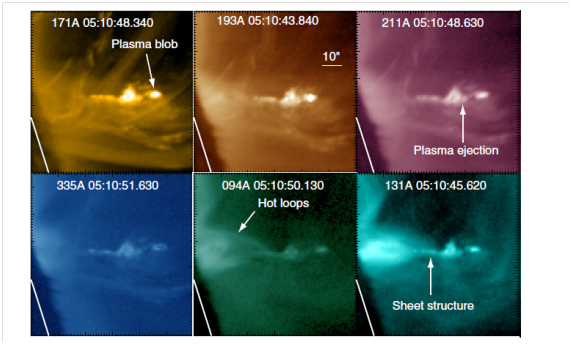 Figure 8: Observations of a flare current sheet in multiple
temperature bands of AIA.
References:
S. Takasao, A. Asai, H. Isobe & K. Shibata; The Astrophysical Journal Letters,
Volume 745, Issue 1, article id. L6, 7 pp. (2012)
Figure 8: Observations of a flare current sheet in multiple
temperature bands of AIA.
References:
S. Takasao, A. Asai, H. Isobe & K. Shibata; The Astrophysical Journal Letters,
Volume 745, Issue 1, article id. L6, 7 pp. (2012)
|

